Table of Contents
Have you ever heard of a game so old, it's practically an antique, yet so complex it's still baffling the smartest computers? That's Go, a board game that's been captivating minds for over 2,500 years. Forget checkers or chess; Go is in a different league. It is deceptively simple, with just a grid and black and white stones, but the strategic possibilities are endless. This article is your guide to the fascinating world of the "players board game go", from its ancient roots in China to its modern-day champions. We'll explore the basic rules, the intricate strategies, and even the surprising ways computers are now playing this ancient game. You’ll learn about the legendary players, the cultural impact, and why Go is more than just a game – it’s a mental martial art. So, get ready to place your stones and embark on this journey into the heart of Go.
What is Go? The Board Game Basics
What is Go? The Board Game Basics
The Ancient Origins of Go
Okay, so picture this: a game so old, it predates the Roman Empire. That's Go for you. It didn't come from some fancy game designer’s studio, but instead, it was born in ancient China over 2,500 years ago. I know, right? It's one of the oldest board games still played today. Forget the bells and whistles; Go is all about simple elegance. It's a game of strategy, a real battle of wits, played on a grid with black and white stones. It's not about flashy moves, but about subtle positioning, about thinking two, three, four moves ahead. It's like chess, but on a whole other level of complexity.
The Basic Setup
Now, let's talk about the board. It's not your typical checkerboard. Go is played on a grid, usually 19x19 lines, though smaller boards like 9x9 and 13x13 are common for beginners and faster games. The game starts with an empty board. Players take turns placing their stones on the intersections of the lines, not inside the squares. One player uses black stones, and the other white. The goal isn't to move your pieces like in chess but to build territories and capture your opponent’s stones. It's like trying to claim land in a silent war, where every move matters. It’s a game that looks simple, but trust me, it has layers upon layers of strategy.
Board Size | Typical Use |
|---|---|
9x9 | Beginners, quick games |
13x13 | Intermediate players, faster games |
19x19 | Standard game, professional play |
The Core Concept
The real genius of Go lies in its core concept: capturing territory. You do this by surrounding empty areas of the board with your stones. It's not about who has the most stones; it's about who controls the most area. You can also capture your opponent's stones by surrounding them completely with your own. When you do this, the captured stones are removed from the board. It's a game of influence, of building walls, and of exploiting your opponent's weaknesses. Imagine it as a battle of encirclement, where the player with the best spatial awareness and strategic foresight wins. It's like a dance of stones, where each placement changes the board and the potential outcome. It's a game that's easy to learn but takes a lifetime to master.
Go Players: From Ancient Masters to Modern Champions
Go Players: From Ancient Masters to Modern Champions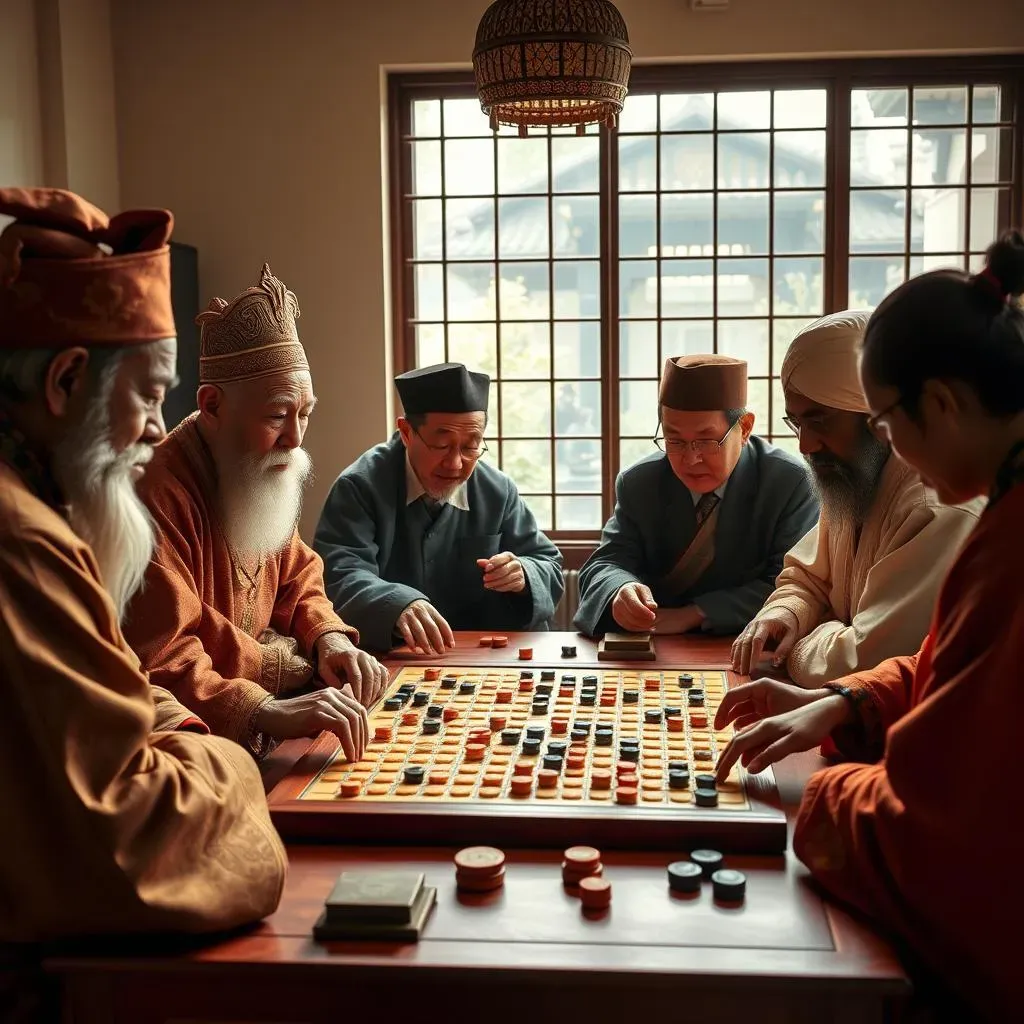
The Legends of the Past
When we talk about Go players, we’re not just talking about people who know the rules; we’re talking about legends. These are individuals who have dedicated their lives to mastering this complex game. Back in the day, in ancient China and Japan, Go masters were revered, almost like royalty. They weren’t just playing a game; they were engaging in a mental duel, a battle of strategy and intellect. These early players, often shrouded in a bit of mystery, laid the foundation for the game we know today. They were the pioneers, figuring out the nuances of the board and developing the first strategies. Their names might not be as well-known as some chess grandmasters, but their impact on Go is undeniable. They were the architects of the game's rich tradition, and their legacy continues to inspire players today.
The Rise of Modern Go Professionals
Fast forward a few centuries, and you see the rise of professional Go players, especially in Japan, Korea, and China. These aren't just hobbyists; they're athletes of the mind, training rigorously every day. They spend hours analyzing games, studying tactics, and honing their strategic thinking. It's like being a professional sports player, but instead of physical prowess, they need mental endurance. They compete in tournaments, striving for titles and recognition. These players are not only incredibly skilled, but they also represent the evolution of Go strategy. They've taken the ancient wisdom and combined it with modern techniques. They're the rock stars of the Go world, and watching them play is like watching a symphony unfold on the board. It’s a testament to the game's enduring appeal and its ability to challenge the very best.
Country | Notable Players |
|---|---|
Japan | Honinbo Shusaku, Go Seigen |
Korea | Lee Chang-ho, Cho Hunhyun |
China | Ke Jie, Nie Weiping |
The AI Revolution
And now, we get to the really mind-blowing part: the rise of AI in Go. For years, it was thought that computers would never be able to master Go due to its sheer complexity. The number of possible moves is just astronomical. But then came AlphaGo, a program developed by Google DeepMind. In 2016, AlphaGo beat Lee Sedol, one of the world's top Go players, in a historic match. This wasn’t just a computer winning a game; it was a paradigm shift. It showed that AI could not only play Go but could also develop its own strategies, sometimes even surprising human players. It’s like a new era for Go, where humans and machines are pushing the boundaries of the game. The future of Go is being written right now, with AI as a major player.
The Rules of Go: A Simple Game with Infinite Depth
The Rules of Go: A Simple Game with Infinite Depth
Alright, so you've got the basics of Go. Now, let's get into the nitty-gritty of the rules. Don't worry, they're surprisingly simple, which is part of the game's genius. First off, players take turns placing stones on the intersections of the grid. Black always goes first. Once a stone is placed, it doesn't move. It stays put. The main goal is to control territory. You do this by surrounding empty areas with your stones. Think of it like building a fence around a patch of land. The player who controls the most territory at the end wins. Sounds easy, right? It's like learning to ride a bike, you get the hang of it, but mastering it is a whole other game.
But, here’s where it gets interesting: capturing stones. If you completely surround your opponent's stones, you capture them, removing them from the board. This is a key part of the game. It's not just about building territory; it's also about attacking your opponent's position. You can also create ‘groups’ of connected stones, which are stronger. The more stones you have connected, the harder they are to capture. It’s a constant back and forth, a delicate dance between offense and defense. It’s like a silent war, where each move can change the tide of the game. It's kind of like a territorial tug-of-war, where you're trying to outsmart your opponent at every turn.
Rule | Description |
|---|---|
Placement | Stones are placed on intersections, not inside the squares. |
Turns | Players alternate turns, placing one stone at a time. |
Territory | The goal is to surround and control empty areas. |
Capture | Surround opponent's stones to remove them from the board. |
There are also a few special situations to be aware of. For example, a stone cannot be placed where it would immediately be captured. This is called "suicide." And there's also the rule of "ko," which prevents endless repetitions of moves. These rules might seem a bit complex at first, but they are essential to the flow and balance of the game. They prevent situations that could lead to endless loops and ensure that the game progresses smoothly. They're the little quirks that make Go, well, Go! These rules, while simple, create a framework for a game with infinite possibilities. It’s the simplicity that allows the complexity to flourish, like a small seed that grows into a giant tree.
Go Strategy: Thinking Ahead and Controlling the Board
Go Strategy: Thinking Ahead and Controlling the Board
The Importance of Strategic Thinking
Okay, so you know the rules, but now comes the real challenge: how do you actually *win* at Go? It's not just about placing stones randomly; it's about thinking strategically. It's like a chess match happening on a much larger and more complex board. You need to think ahead, anticipating your opponent's moves, and planning your own to maximize your control over the board. Every stone you place has a ripple effect, influencing not just the immediate area, but the entire game. A good Go player doesn't just react, they anticipate. They see the board as a whole, not just individual moves. It's like being a conductor of an orchestra; you need to understand how each instrument plays its part to create a harmonious whole. It's not just about capturing stones; it's about building influence, setting up future opportunities, and being one step ahead of your opponent.
Controlling the Board: More Than Just Territory
Controlling the board in Go is more than just claiming territory; it's about establishing influence. Think of it like planting seeds; you're not just claiming a spot, you're also creating a network of power. You need to build strong groups of stones that are hard to capture. You need to maintain a balance between offense and defense. It's like building a castle; you need solid walls, but you also need to be able to attack your enemies. It’s not just about having more stones on the board; it’s about having your stones in the right places, working together to control the flow of the game. Go strategy is a mix of planning, reacting, and adapting. It's like being a general on the battlefield, constantly evaluating the situation and adjusting your strategy accordingly. The game is a dance of power, where influence and control are the ultimate goals.
Strategic Element | Description |
|---|---|
Influence | Controlling areas of the board to dictate the flow of the game. |
Strong Groups | Creating connected groups of stones that are difficult to capture. |
Balance | Maintaining a balance between attacking and defending. |
Planning | Anticipating your opponent's moves and planning ahead. |
Life and Death in Go: Capturing Stones and Building Territory
Life and Death in Go: Capturing Stones and Building Territory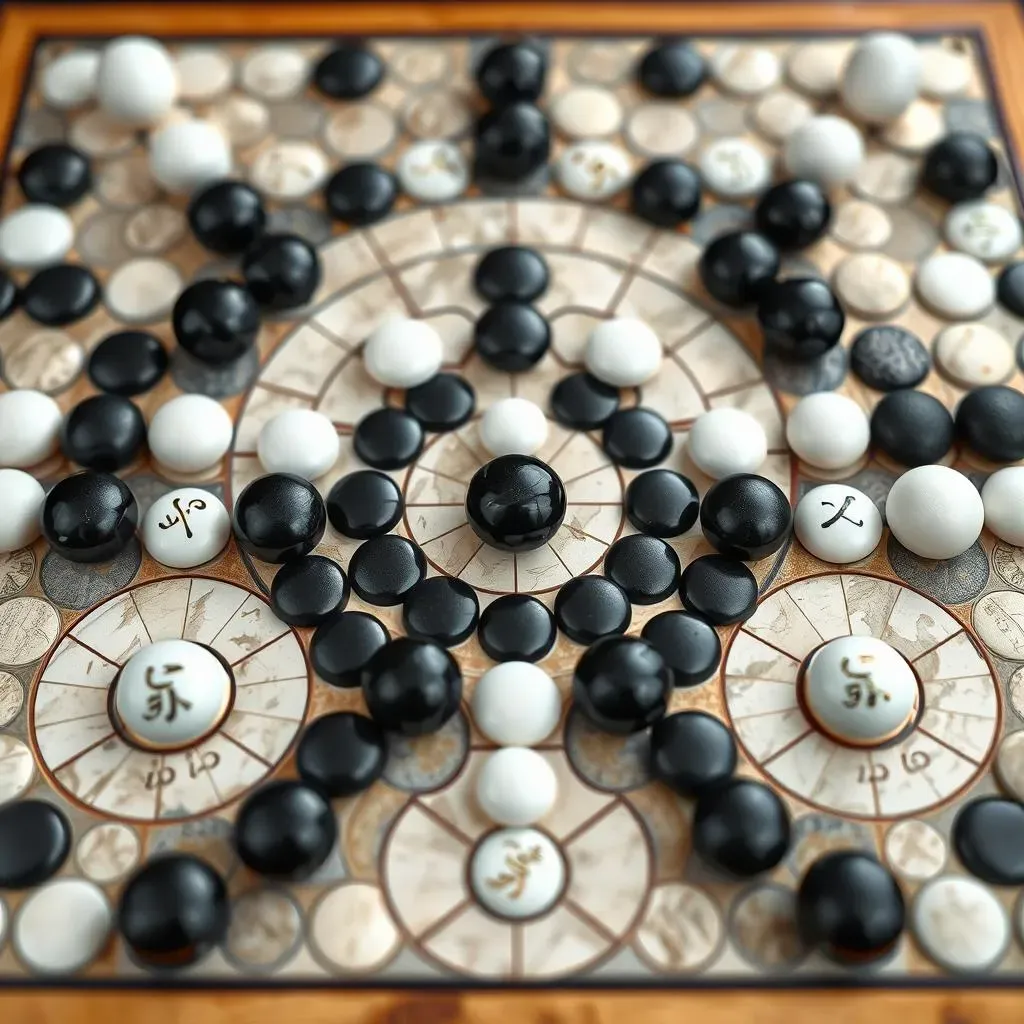
The Dance of Life and Death
Okay, so "Life and Death" in Go sounds dramatic, right? It's not about actual, you know, life or death, but it's a crucial concept in the game. It's all about whether a group of stones can survive or if they're doomed to be captured. A "live" group of stones has enough space or "liberties" (the empty intersections next to them) to breathe, so to speak. They can't be surrounded and captured. But if a group is completely surrounded and has no liberties left, then it's "dead" and gets taken off the board. It's like a game of survival, where you're constantly trying to keep your stones alive while trying to kill off your opponent’s. It's a delicate balance, a constant assessment of who has the upper hand in a given area of the board. It's not just about laying down stones; it's about understanding their potential for life or death.
Building Territory: The Art of Encirclement
Now, let's talk about territory. In Go, you don't just win by capturing stones; you win by controlling more territory than your opponent. You do this by surrounding empty spaces with your stones. It's like building walls around a kingdom. But here's the catch: you have to make sure your walls are strong enough to survive. If your opponent can break through your walls and surround your stones, you lose territory and potentially stones. It's a constant dance of building and attacking, where the best players are masters of both. Every stone you place is a gamble, a calculated risk. It’s like a game of chess where the pieces can be captured but also create a boundary line that can be used to create a new territory. It’s a mix of offense and defense, and how you balance both is what determines who wins.
Concept | Description |
|---|---|
Life | A group of stones that cannot be captured. |
Death | A group of stones that can be captured. |
Territory | Empty areas surrounded by a player's stones. |
Liberties | Empty intersections next to a stone or group of stones. |
Seki and Ko: Understanding Special Situations
Seki and Ko: Understanding Special Situations
Seki: The Mutual Life
Alright, so you've got the hang of life and death, but Go loves to throw curveballs, and that's where "Seki" comes in. Seki is a special situation where two or more groups of stones are alive, not because they have enough liberties, but because they are mutually dependent on each other's survival. Think of it like a standoff where neither side can capture the other without being captured themselves. It's a kind of stalemate, a peaceful coexistence born out of mutual threat. It's a tricky concept to grasp initially, but once you see it in action, it's like a lightbulb moment. It's not about who's stronger but about who understands the delicate balance of the board. It's like a dance where both partners need each other to avoid falling. It’s one of those things that make Go so unique and fascinating.
Imagine two groups of stones facing each other, neither able to completely surround the other. If one group tries to capture the other, it exposes itself to being captured in return. It's like a Mexican standoff, where everyone's pointing a gun at each other, and no one dares to fire. In a Seki, the stones remain on the board, and neither player can claim the territory within the boundary. It adds an extra layer of complexity to the game, as it forces players to think about the overall board situation, not just individual groups. It's not about winning or losing in these situations, it's about understanding the balance that is created. It’s a perfect example of how Go is not just a game of power, but also a game of balance and understanding.
Seki Characteristic | Description |
|---|---|
Mutual Dependence | Groups of stones rely on each other for survival. |
No Capture | Neither group can capture the other without being captured in return. |
Stalemate | A situation of balanced coexistence. |
Ko: The Recapture Rule
Now, let's talk about "Ko," another special situation in Go. Ko is basically a rule designed to prevent endless looping. Imagine a situation where a player captures a stone, and then the other player can immediately recapture it, and so on. It's like a seesaw that never stops moving. That would make the game go on forever! To avoid this, the Ko rule says that after a player captures a stone in a Ko situation, the other player cannot immediately recapture. Instead, they have to play at least one move elsewhere on the board before they're allowed to recapture the Ko. It’s a rule that adds an extra layer of strategy, forcing players to think about the long game, not just the immediate move. It’s like a speed bump on the road, it forces you to slow down and think about the next move.
The Ko rule forces players to consider the entire board, not just that one spot. It means you have to make another move elsewhere, and that move could have its own consequences. It adds a level of complexity to the game that is both challenging and rewarding. It’s like a detour on a journey, it might seem like a setback, but it can often lead to new opportunities. You might need to make a move that strengthens your overall position, or you might use the Ko as a way to gain advantage in another part of the board. It’s a chess move that requires you to think several moves ahead. It's all about understanding the impact of each move, not just in isolation, but in the context of the entire game. It’s what makes Go so deep and rewarding.
- Ko Rule: Prevents immediate recapture in certain situations.
- Purpose: Avoids endless loops.
- Strategic Impact: Forces players to consider the whole board.
Tactics in Go: Essential Moves and Techniques
Tactics in Go: Essential Moves and Techniques
Okay, so you've got the big picture of Go – territory, life, death, all that jazz. But what about the nitty-gritty, the actual moves you make on the board? That's where tactics come in. Tactics in Go are like the individual brushstrokes that make up a masterpiece. They're the specific techniques you use to gain an advantage, capture stones, or secure territory. It's not about grand strategy all the time; sometimes, it's about making the right move at the right time. It's like being a martial artist, you need to know the basics, but also the specific moves that can turn the tide of a fight. These tactics, when used correctly, can be game changers. And trust me, learning these tactics will level up your Go skills big time.
There are a bunch of core tactics that every Go player needs to know. Things like "atari," which is when you threaten to capture a single stone. Then there's "hane," which is a move that cuts off your opponent's stones. And "connecting," which is joining your stones to make them stronger. These moves might seem simple, but they're the building blocks of more complex strategies. It's like learning scales on a piano; you need to master them before you can play a symphony. Each tactic has its own purpose and its own timing. You wouldn't use an atari when you need to make a strong connection and vice versa. It's all about understanding the board and the implications of each move. It's like a dance, each step needs to be in sync with the music.
Tactic | Description |
|---|---|
Atari | Threatening to capture a single stone. |
Hane | A move that cuts off opponent's stones. |
Connecting | Joining your stones to make them stronger. |
Cutting | Separating opponent's stones. |
The History of Go: A Journey Through Time
The History of Go: A Journey Through Time
Alright, so let's talk about the history of Go, because trust me, it's a wild ride. This game isn't some new fad; it's been around for over 2,500 years, making it one of the oldest board games *still* played today. It all started in ancient China, where it was considered one of the four essential arts for cultured scholars. Can you imagine? Go wasn't just a pastime; it was a way to cultivate the mind. It's like a mental workout that's been going on for millennia. The game was so revered that it was even used to teach military strategy to generals. It's like a super-secret training tool disguised as a board game. It's crazy how something this ancient can still be so relevant and engaging today. It really makes you think, doesn't it?
From China, Go spread to Korea and Japan, where it really took off. In Japan, it became a national obsession, with professional players and tournaments emerging. It's like the Super Bowl of ancient times. The game was refined, and new strategies were developed. It was during this period that some of the greatest Go players in history emerged, their names still whispered with reverence today. The game became embedded in Japanese culture, featuring in art, literature, and even samurai training. It's like Go became part of the national DNA. It's fascinating to see how the game has evolved over time, adapting to different cultures while still retaining its core essence. It's like a timeless story that continues to be written.
Era | Significant Developments |
|---|---|
Ancient China | Origin of the game, considered an art form. |
Korea & Japan | Rise of professional players and tournaments. |
Modern Era | Global spread and AI advancements. |
Competitive Go: Professional Players and Tournaments
Competitive Go: Professional Players and Tournaments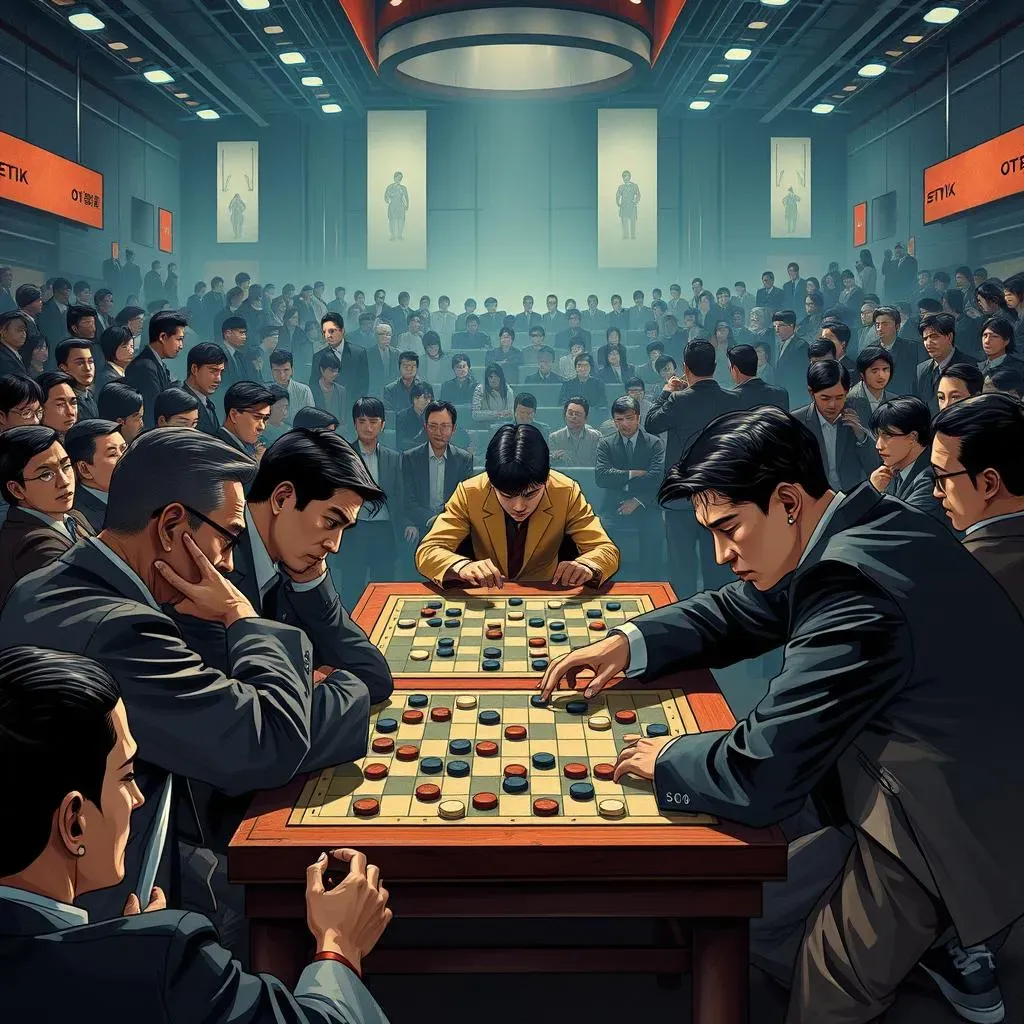
The World of Professional Go Players
So, you've heard about Go, and you're probably thinking, "Okay, it's a cool game, but is there, like, a competitive scene?" Oh, my friend, is there ever! The world of professional Go is intense. These aren't just casual players; they're dedicated athletes of the mind, training for hours every single day. They're like the elite warriors of the Go world, honing their skills, studying tactics, and analyzing games with a focus that's honestly mind-blowing. They compete in tournaments, vying for titles and recognition. It's not just a hobby; it's a profession, a career that requires both natural talent and a relentless work ethic. These players are the rock stars of Go, and watching them play is like witnessing a ballet of strategic brilliance.
Major Go Tournaments and Championships
When it comes to tournaments, Go has some serious heavy hitters. Think the World Series of Poker, but with more strategy and less bluffing. There are major tournaments held in Asia, especially in Japan, Korea, and China, where the game has the biggest following. These tournaments attract the best players from around the globe, all vying for a chance to prove their dominance. We're talking about events that draw huge audiences, with live broadcasts and commentary, just like any major sporting event. It's a whole ecosystem of competition, where the pressure is high, and the stakes are even higher. These tournaments aren't just about winning; they're about pushing the boundaries of what's possible in the game of Go. They're a testament to the game's enduring appeal and its ability to challenge even the most skilled players.
Tournament | Description |
|---|---|
Honinbo Tournament | One of Japan's oldest and most prestigious tournaments. |
Meijin Tournament | Another major title in Japanese professional Go. |
Ing Cup | A global tournament held every four years. |
Samsung Cup | A prestigious international tournament in Korea. |
Go Equipment: Boards, Stones, and Bowls
Go Equipment: Boards, Stones, and Bowls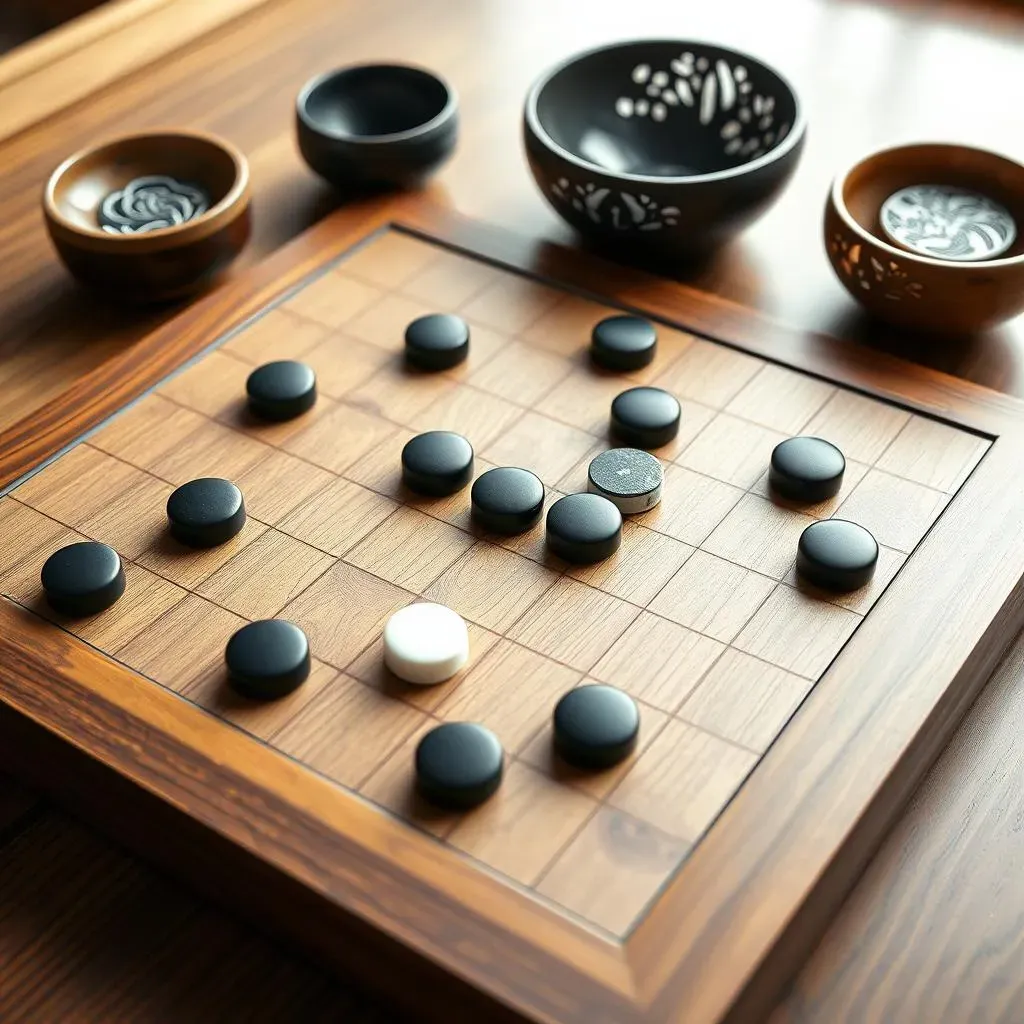
The Go Board: More Than Just a Grid
Okay, so let's talk about the gear, the stuff you need to actually play Go. First up, the board. It’s not just some random piece of wood; it’s the battlefield where all the action happens. The standard Go board is a grid of 19x19 lines, but you'll also find smaller boards like 9x9 and 13x13, which are great for beginners or quick games. The board itself can be made of different materials, from basic wood to fancy, handcrafted pieces made of kaya wood, which is considered top-tier. It’s like the difference between a regular chessboard and a handcrafted one made of rare wood – the quality can really elevate the playing experience. But no matter the material, the grid is the most important part, it’s where the stones will be placed, and the game will be played. It's like the stage for the drama of Go.
The size of the board is important too. A 19x19 board is the standard for serious play, offering more complexity and strategic depth. Smaller boards are great for learning the ropes, since it allows for faster and shorter games. The lines on the board are also important. They're what the stones are placed on, not inside the squares like in chess. And those little dots you see on the board? Those are the handicap points, used to help balance the game when players of different skill levels are playing. It’s like a carefully designed playing field, where every detail has a purpose. The board is the foundation for the whole game, the canvas upon which the game’s story is written.
Go Stones and Bowls: The Tools of the Trade
Next up, the stones. These aren't just ordinary pebbles; they’re the pieces you use to claim territory and capture your opponent’s stones. Go stones are traditionally made from glass or slate and come in two colors: black and white. They're usually round and smooth, perfect for placing on the board. The feel of the stones is important, they have a nice weight to them, and they make a satisfying sound when you place them on the board. It’s a tactile experience that adds to the overall enjoyment of the game. The quality of the stones can vary greatly, with some being handcrafted and polished to perfection. They’re like the soldiers on the battlefield, each one playing a crucial role in the overall strategy.
And then there are the bowls, or "go-ke," where you keep your stones. These bowls are usually made of wood or bamboo, and they're not just functional; they’re also beautiful. The bowls are used to hold your stones before and after they're used in the game. They’re the storage containers for the pieces you will use. They are usually designed to look nice, and some are even intricately carved. It's like having a special case for your playing pieces, a place where they can rest before the battle begins. The bowls, along with the stones, complete the Go set, transforming it from just a game into an experience. It all adds to the ritual of Go, making it a very special game.
Equipment | Description |
|---|---|
Go Board | Grid of 19x19 lines (standard), smaller sizes available. |
Go Stones | Round pieces in black and white, made from glass or slate. |
Go Bowls | Containers for holding the stones, made of wood or bamboo. |
Computers and Go: The Rise of AI Players
Computers and Go: The Rise of AI Players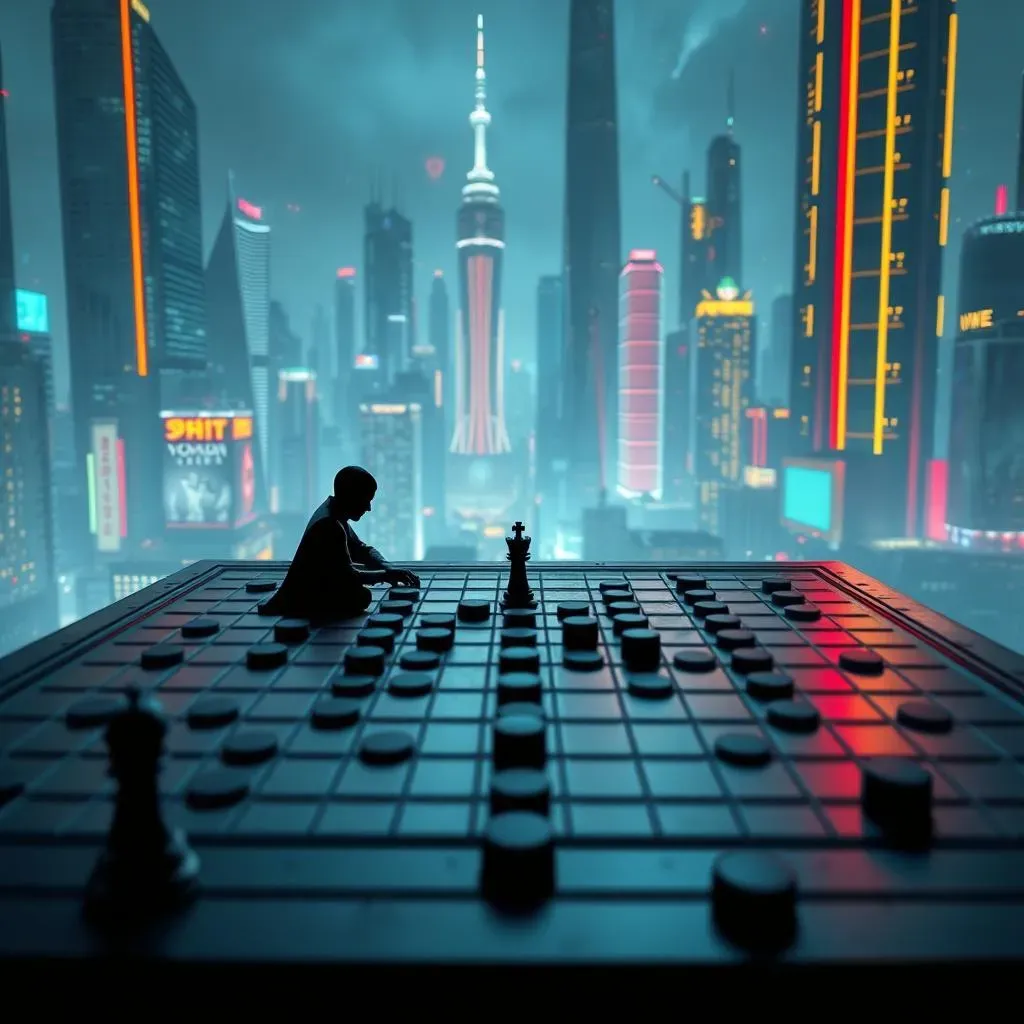
The Challenge of Go for AI
Okay, so for years, people thought computers would never be able to master Go. It's not like chess, where brute force calculation can get you pretty far. Go is just too complex. The number of possible moves is astronomical, way more than the number of atoms in the universe, or so they say. It's not just about calculating every possibility; it’s about intuition, about understanding the flow of the game, and about making decisions based on subtle cues. These are things that computers, well, they just weren't very good at. It’s like asking a calculator to write a poem. It’s a whole different skill set. The challenge of making a computer play Go was considered one of the grand challenges of artificial intelligence, a real test of what machines could do.
But, that’s the thing about challenges, right? They’re meant to be broken. And that's where things got really interesting. Researchers started using machine learning techniques, which is where computers learn from data, not just from being programmed with rules. They fed the computers thousands and thousands of Go games, letting them analyze patterns and develop their own strategies. It's like teaching a kid how to ride a bike, you show them how it’s done, and they eventually figure it out on their own. This was a game-changer. It wasn't about programming every move; it was about creating a system that could learn and adapt like a human player. And this is how AI started to play Go, and it wasn't just playing, it was getting scary good.
Challenge | Description |
|---|---|
Complexity | Vast number of possible moves makes brute force calculation impossible. |
Intuition | Go requires human-like intuition and understanding. |
Learning | Traditional programming methods are insufficient. |
AlphaGo and the Paradigm Shift
Then, in 2016, the world of Go was turned upside down. Google's DeepMind developed AlphaGo, an AI program that beat Lee Sedol, one of the world's top Go players, in a historic match. It was a huge moment, not just for Go, but for AI research in general. This wasn’t just a computer winning a game; it was a demonstration of the power of machine learning. AlphaGo didn't just play by the rules; it developed new strategies, sometimes making moves that surprised even the most seasoned human players. It was like watching a robot make a creative leap, an act that was thought to be uniquely human. This was a watershed moment, proving that AI could not only compete with humans but also surpass them in complex strategic games.
After AlphaGo, other AI programs emerged, each one building upon the lessons learned from its predecessor. These programs aren't just playing Go; they're pushing the boundaries of the game, exploring new possibilities, and forcing human players to rethink their strategies. It’s like the AI are becoming the new teachers of the game, showing us how to play in new and unexpected ways. The rise of AI in Go has changed the game forever, opening up new avenues of research and challenging our understanding of what’s possible. It’s not just about machines getting better at Go; it’s about machines helping us understand the game on a deeper level.
- AlphaGo: AI program that defeated a top human player.
- Machine Learning: AI learns from data, not just programming.
- New Strategies: AI develops novel and surprising moves.
- Paradigm Shift: AI has changed how we think about Go.
Go in Popular Culture: Movies, Books, and Beyond
Go in Popular Culture: Movies, Books, and Beyond
Okay, so you've got the lowdown on Go, but let's talk about something a bit different: its appearances in popular culture. This isn't just some niche game played in smoky back rooms; Go has made its way into movies, books, and even TV shows. It's like a secret language that pops up in unexpected places. Sometimes it's a central plot point, other times it's just a subtle nod to the game's strategic depth. It's like finding a hidden Easter egg in your favorite movie, a little wink to those in the know. The fact that Go has permeated popular culture shows how it has become more than just a game; it's a symbol of intellect, strategy, and even a bit of mystery.
You might be surprised at how often Go shows up. In movies, it's often used to represent characters who are deep thinkers, complex strategists, or even just a bit eccentric. It's like the visual shorthand for "this person is smart and probably a little bit mysterious." And in books, Go is often used as a metaphor for life, a complex game with its own rules and strategies. You’ll find stories where the characters use Go to solve problems, make decisions, or even just understand themselves better. It’s like the game becomes a lens through which we see the world. It’s not just about playing the game, it’s about the ideas and concepts that are represented by it. It's like a hidden gem waiting to be discovered in various forms of media.
Media | Examples |
|---|---|
Movies | "Pi," "A Beautiful Mind" |
Books | "The Master of Go," "Shibumi" |
TV Shows | "Hikaru no Go" (anime) |
Psychological Aspects of Go: Beyond the Board
Psychological Aspects of Go: Beyond the Board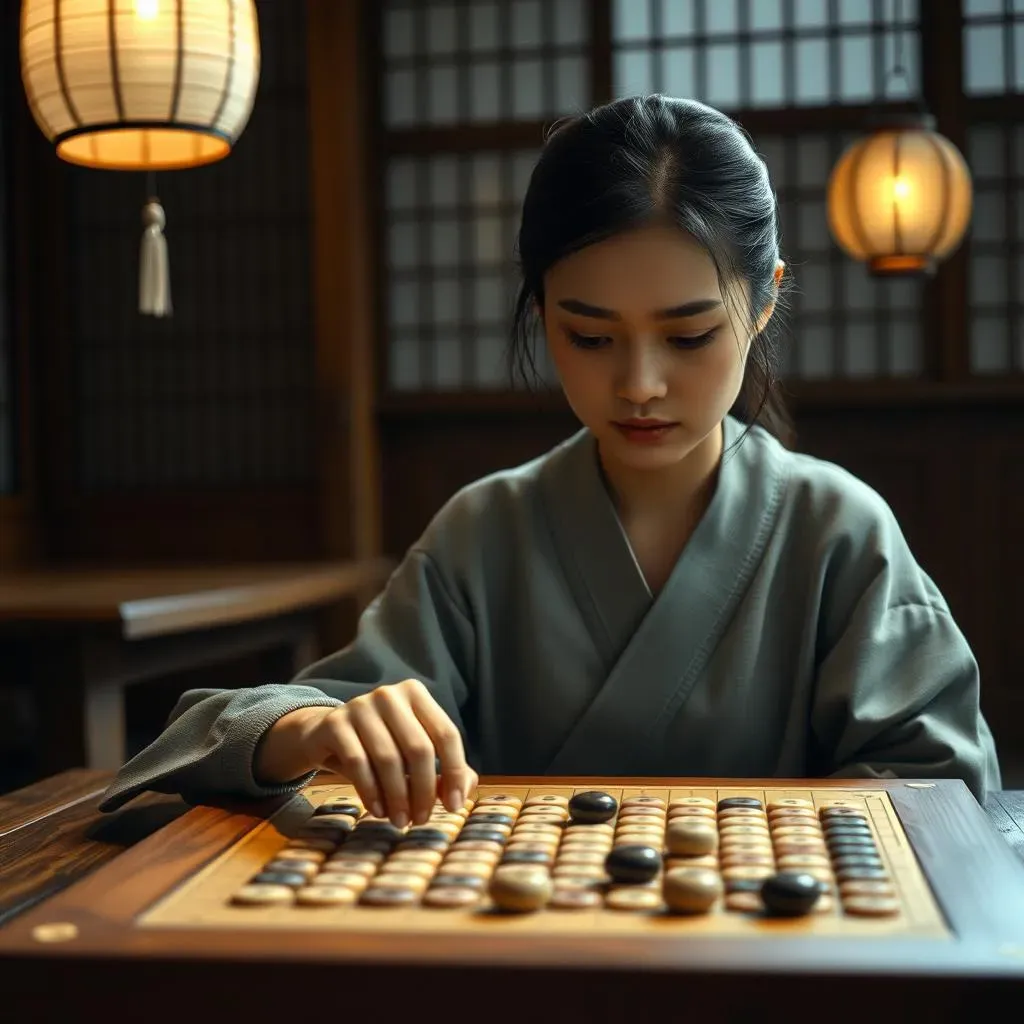
Go as a Mental Workout
Okay, so we've covered the game, the history, and even the AI, but let's talk about something a little deeper: what Go does to your brain. It's not just about moving stones; it's a serious mental workout. Playing Go is like doing push-ups for your mind. You’re constantly making decisions, planning ahead, and adapting to new situations. It's like a mental marathon that requires focus, concentration, and a whole lot of strategic thinking. This isn't just some casual game; it's a tool that can sharpen your mind, improve your cognitive abilities, and even help you in your everyday life. It's like a secret weapon for your brain, disguised as a board game. It's been said that playing Go is like meditation in motion, a way to train your mind to be present and focused.
And it's not just about strategy; Go also teaches you patience and resilience. You can't always win, and sometimes you make mistakes, but the key is to learn from them and keep moving forward. It's like a practice in dealing with setbacks, a safe place to learn how to adapt and adjust your strategy. This ability to bounce back from a loss is a valuable skill that can help you in all aspects of life. It’s about playing the long game, understanding that sometimes you have to lose a battle to win the war. And it's not just about winning; it's also about the journey, the process of learning and growing as a player. It’s a game that challenges you to be better, not just at Go, but at life.
Go and Cognitive Development
Now, let’s get a little more scientific. Studies have shown that playing Go can actually have a positive impact on cognitive development. It's like a brain booster that can improve your memory, your spatial reasoning, and your problem-solving skills. Think of it like a mental gym, where you're constantly working out different parts of your brain. It’s not just about memorizing patterns; it's about understanding complex relationships and making decisions under pressure. These are skills that are useful in everything from schoolwork to your career. It’s like a superpower for your brain, making you smarter and more adaptable.
And get this: some studies even suggest that playing Go can help reduce the risk of Alzheimer's disease and dementia. It's like a form of mental exercise that helps keep your brain healthy and strong as you age. It’s a way to keep your mind active and engaged, preventing cognitive decline. It’s not a cure, but it’s a way to improve your brain health. It's like taking your brain to the gym every day, keeping it fit and sharp. It’s a beautiful thing when something you enjoy can also be good for your health, a game that is both fun and beneficial. It’s an example of how a simple board game can have a profound impact on your brain.
Cognitive Benefit | Description |
|---|---|
Memory | Improves short-term and long-term recall. |
Spatial Reasoning | Enhances ability to understand and manipulate spatial relationships. |
Problem-Solving | Sharpens strategic thinking and decision-making skills. |
Resilience | Builds mental fortitude and the ability to bounce back from setbacks. |
Analyzing Go: Complexity and Depth
Analyzing Go: Complexity and Depth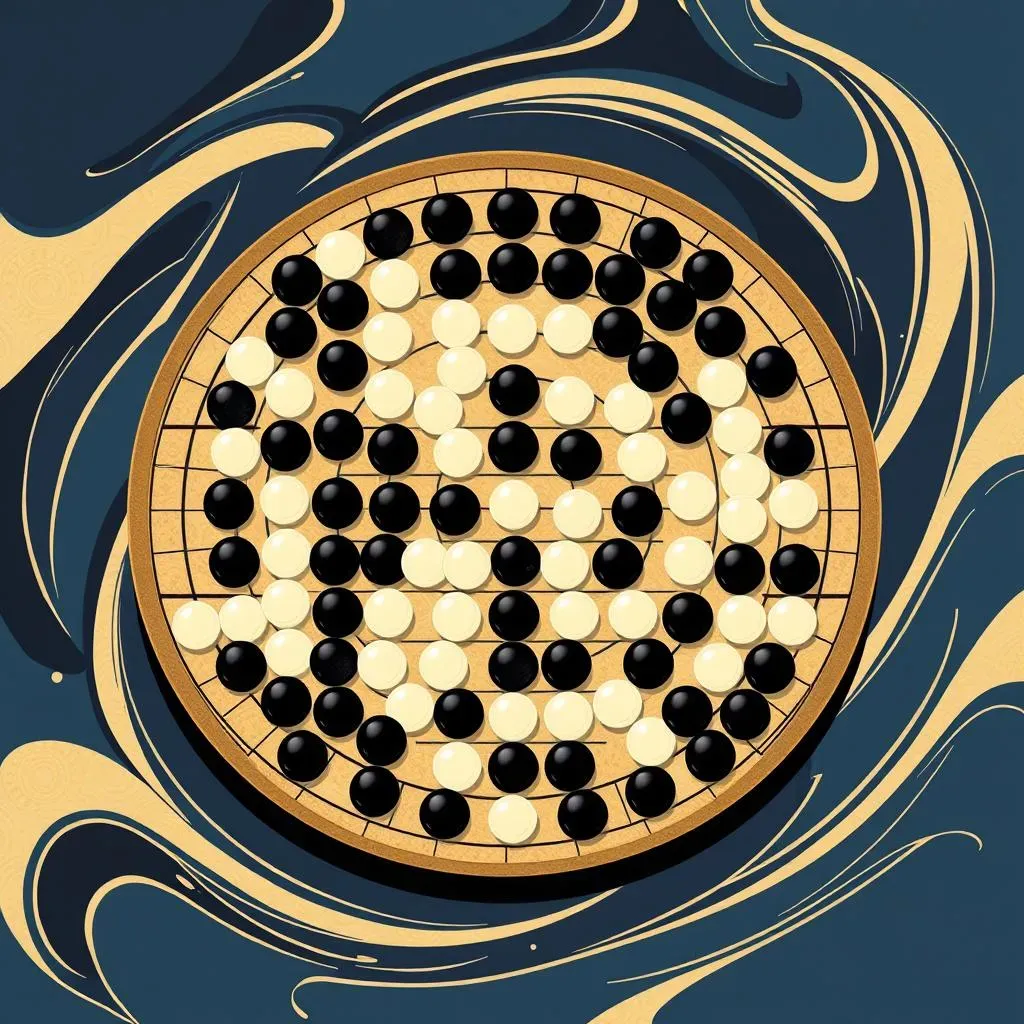
Alright, so you've seen the basics of Go, the players, the rules, and even the AI, but let's get real for a second: Go is *insanely* complex. We're not just talking about a game with a few complicated rules; we're talking about a system with almost infinite possibilities. It's like trying to understand the universe, but instead of stars and planets, you're dealing with black and white stones on a grid. The sheer number of possible moves is mind-boggling, way more than chess. It’s not just about calculating every single move, it's about understanding the underlying patterns, the subtle shifts in influence, and the long-term consequences of each placement. It's a game that can be analyzed from so many different angles, and it still has the ability to surprise even the most seasoned players. It’s like a puzzle that never has the same solution twice.
Go is often described as a "zero-sum" game, meaning that one player's gain is directly equivalent to the other player's loss. There are no draws in Go, someone always wins, someone always loses. It's also a "perfect information" game, meaning that all the information is visible to both players at all times. There are no hidden cards, no secret moves. It's all about how you use the information you have. But here’s where it gets really interesting, Go is also a "partisan" game, meaning that each player has different pieces and a different objective, they're not mirrored like in chess. It’s a game that requires you to not only think about your own moves, but also to understand your opponent’s strategy. It’s like a debate, where you have to be able to predict and respond to your opponent’s arguments. And despite its deterministic nature, where there is no randomness, the complexity is still extremely high, making it difficult for computers to master.
Game Characteristic | Description |
|---|---|
Zero-Sum | One player's gain is the other's loss. |
Perfect Information | All information is visible to both players. |
Partisan | Players have different pieces and objectives. |
Deterministic | No randomness or chance involved. |
Go vs. Other Games: Comparisons and Contrasts
Go vs. Other Games: Comparisons and Contrasts
Go vs. Chess: A Battle of Complexity
Okay, so let's get into the fun part: comparing Go to other games. And the first comparison that usually comes to mind is chess. Both are strategy games, but they're worlds apart in complexity and style. Chess is like a carefully choreographed dance with a limited number of pieces, each with their own specific moves. It's about tactical strikes and calculated attacks. Go, on the other hand, is like an open-ended battle where you're constantly building and adapting. It's not about moving pieces; it's about creating influence and controlling territory. Chess is like a laser beam, precise and focused, while Go is like a flood, expanding and engulfing. Both are challenging, but they require different mindsets and approaches. It's like comparing a sprint to a marathon, both are physically challenging, but each requires different strategies.
The key difference lies in the sheer number of possibilities. Chess, while complex, has a finite number of moves. Go, however, has a much larger board and more freedom of movement, leading to an astronomical number of potential positions. It’s been said that Go has more possible positions than there are atoms in the universe. Think about that for a second! This makes Go much harder for computers to master, as brute force calculation is simply not feasible. Chess is often about tactical combinations and material gain, while Go is more about strategic positioning and long-term planning. It's like comparing a detailed painting to a sprawling landscape; both are beautiful in their own way, but they require different perspectives. They are both games of strategy, but Go is more about the art of influence, while chess is about the art of attack.
Feature | Go | Chess |
|---|---|---|
Board Size | 19x19 (standard) | 8x8 |
Piece Movement | Stones placed, not moved | Pieces move according to rules |
Complexity | Extremely high | High |
Focus | Territory and influence | Tactical attacks and material gain |
Go vs. Other Board Games: A Different Kind of Strategy
But it's not just chess; Go stands apart from most other board games as well. Games like checkers or backgammon are more tactical and less strategic. They often involve a lot of pattern recognition and quick calculations. Go, on the other hand, demands a much deeper level of strategic thinking, long-term planning, and an understanding of the overall board situation. It's less about individual moves and more about the overall flow of the game. It's like comparing a quick puzzle to a complex architectural design; one requires immediate solutions, the other requires long-term vision. Go is also different from games like Risk or Settlers of Catan, which have elements of chance and resource management. Go is purely a game of skill, where every move is a calculated decision. It’s like comparing a game of poker, where luck plays a role, to a game of Go, where skill is the only determinant.
Even modern strategy board games, with their complex rules and multiple options, often lack the elegant simplicity and infinite depth of Go. Go is a game that rewards patience, strategic foresight, and a deep understanding of spatial relationships. It's not just about winning; it's about the journey of learning and growth. It’s like comparing a complex role-playing game with hundreds of rules, to a game of Go, where the rules are simple, but the complexity is endless. It's a game that can be both challenging and rewarding, a game that will keep you thinking and learning for the rest of your life. It’s a game that is both simple and profound, a game that is both ancient and modern. It’s a game that is simply unique.
"The game of Go is, in its way, a microcosm of life itself." - Yasunari Kawabata
- Checkers: More tactical, less strategic.
- Backgammon: Involves pattern recognition and luck.
- Risk: Chance and resource management.
- Catan: Chance and resource management.